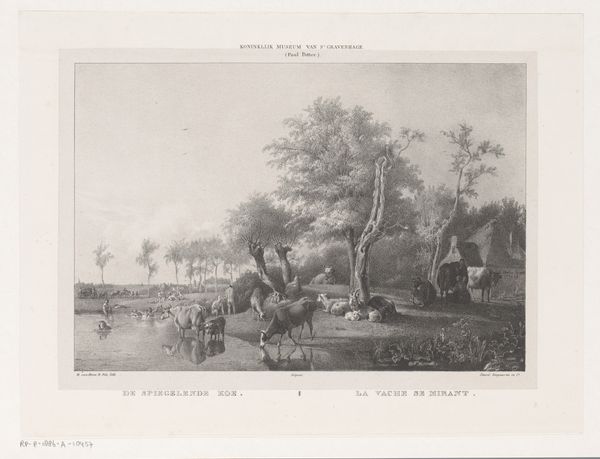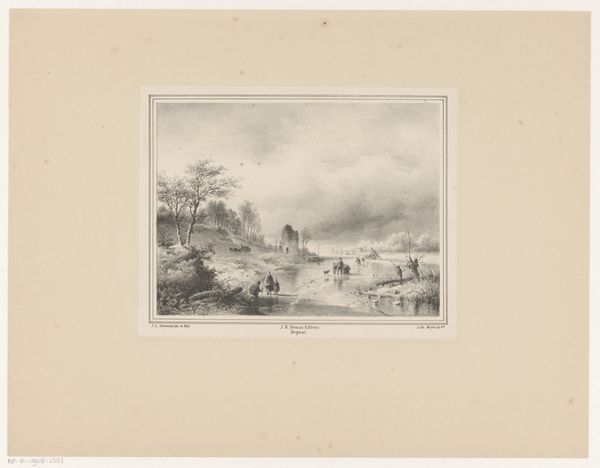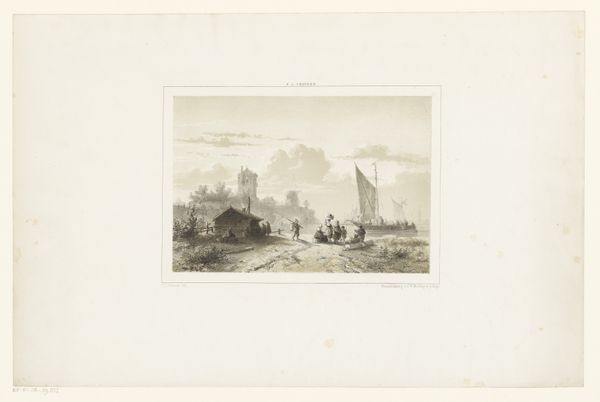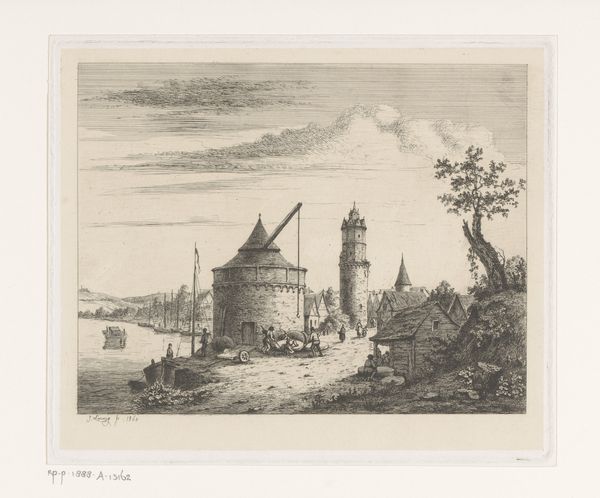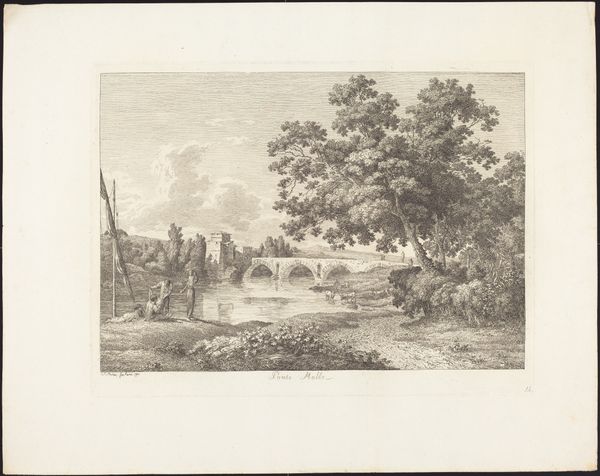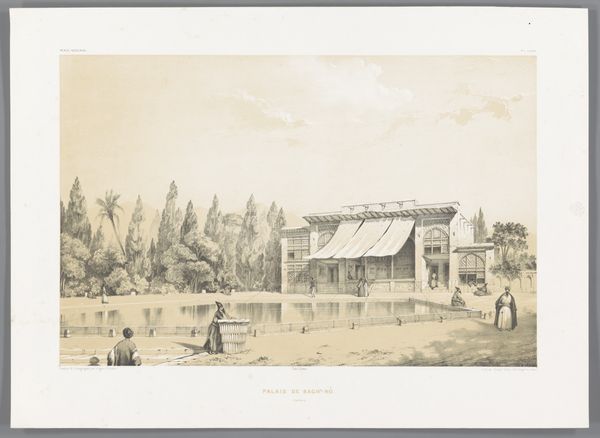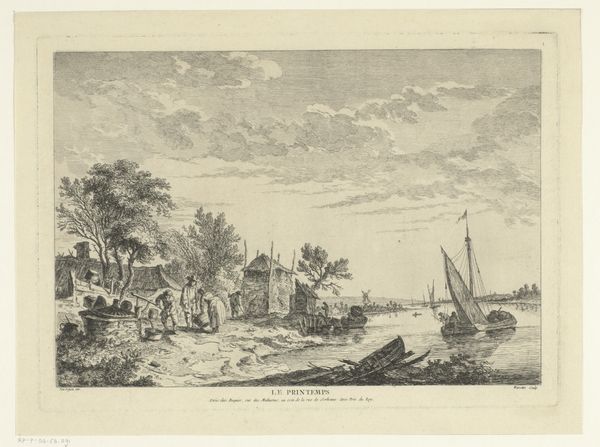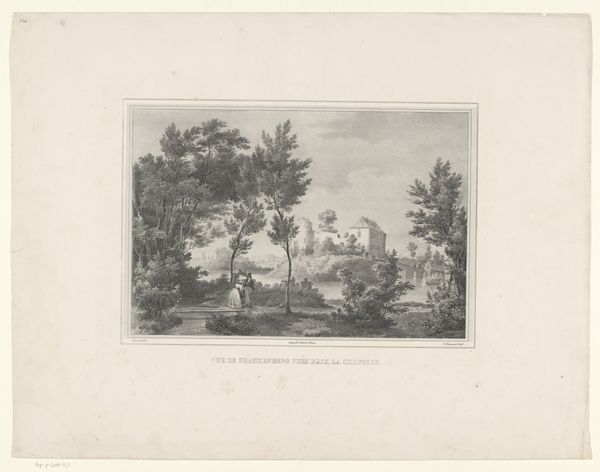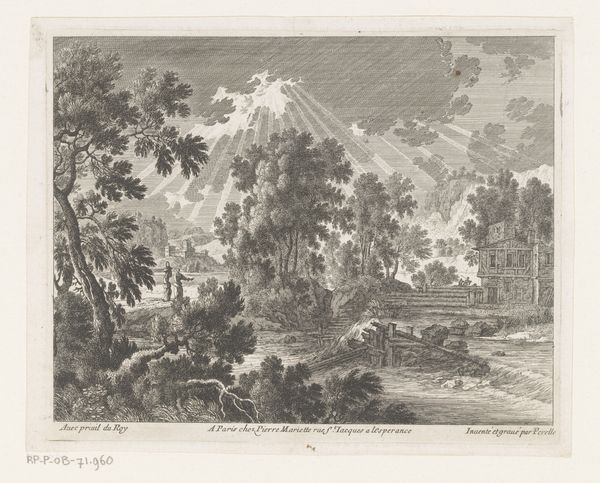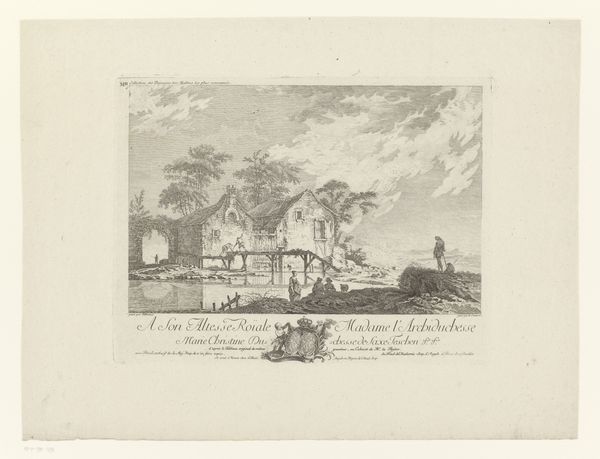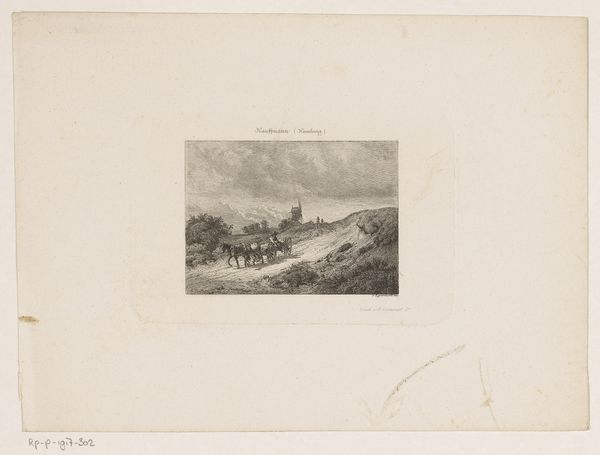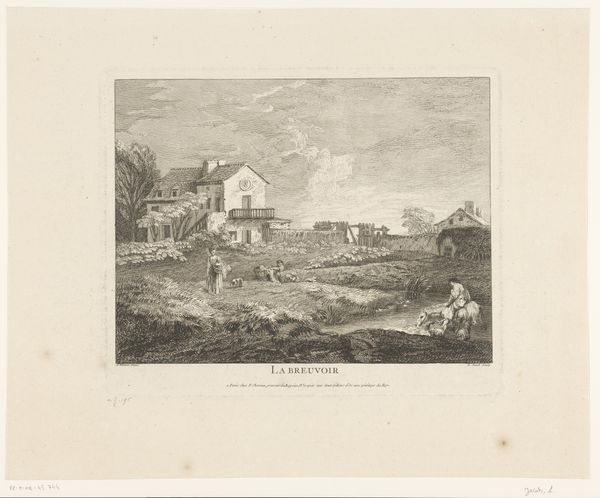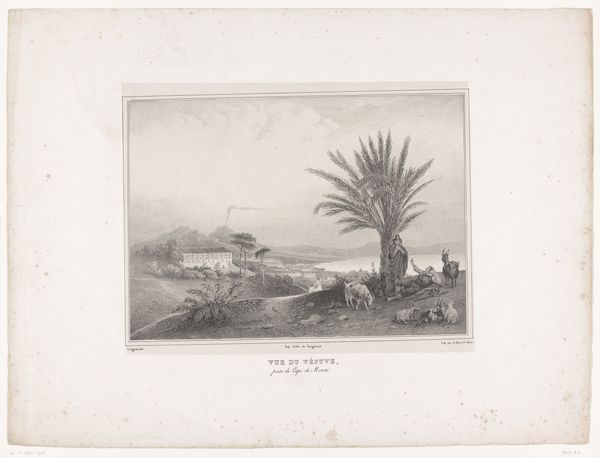
drawing, print, ink, engraving
#
drawing
# print
#
landscape
#
ink
#
orientalism
#
engraving
Dimensions: height 433 mm, width 550 mm
Copyright: Rijks Museum: Open Domain
Curator: Let's take a look at "Shush-Daniel in Susa, Iran", an engraving made by Eugène Flandin between 1843 and 1854. It's currently housed here at the Rijksmuseum. What strikes you initially? Editor: The first thing that grabs me is the stillness and the stark light. It feels almost dreamlike, as though lifted from some ancient text. What's particularly striking is how that tomb structure, topped with the iconic stepped dome, dominates the composition. It's as if all of life, represented by the figures and the water, converges around this symbol. Curator: Precisely. Flandin was part of a French diplomatic mission to Persia during that time. This work, like many from that expedition, reflects the surge of Orientalism in Europe, but his depictions offer a somewhat detached and documentary view. Notice how it’s titled after Daniel? This wasn't just landscape art, but intertwined with European understanding – and perhaps, appropriation – of biblical history playing out on Persian soil. It speaks volumes about power dynamics and the cultural gaze of the West. Editor: Absolutely, the symbolism of Daniel—a figure of resilience and faith in a foreign land—cannot be overlooked. It plays into the pre-existing European fascination with biblical narratives re-staged in the "exotic" East. It brings to mind ideas of cultural intersection and negotiation between East and West but what truly stands out is how those slender palm trees seem to gesture towards a narrative beyond the merely picturesque, their forms like elegant calligraphic strokes defining faith and heritage. Curator: Flandin’s composition definitely plays with established visual tropes, catering to Western expectations while subtly imbuing it with his observations. But I think it is difficult to disentangle it entirely from the colonialist agendas, that inherently framed those expeditions. Even the act of documenting, collecting, displaying… they are all steeped in that legacy. Editor: That’s right. His art operates on several layers – beautiful representation, colonial enterprise and even unintentional historical document. Examining his work is like looking through a very complex mirror where cultural echoes ripple across time and space. It leaves one contemplating the intertwined nature of history, art and perception. Curator: Indeed. Flandin's Shush-Daniel provides us with such insights. It's not only an aesthetically intriguing piece, but an opportunity to engage critically with how cultures perceive each other.
Comments
No comments
Be the first to comment and join the conversation on the ultimate creative platform.
